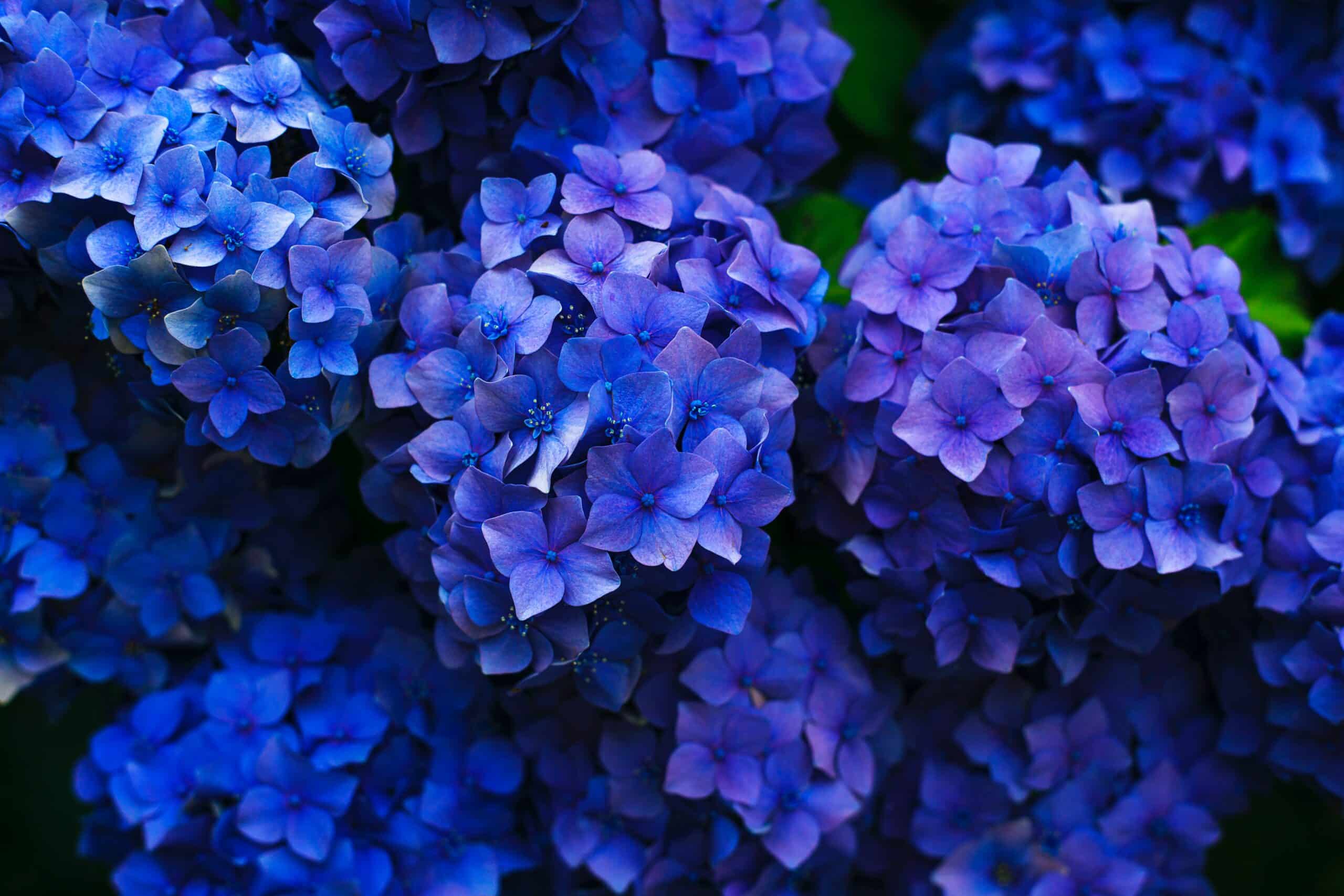The Prayer Plant is a beautiful and exotic houseplant that will bring a burst of color to any indoor area. Its unique foliage, with its deep green hues combined with striking red veins, creates an image of a starry night sky in the comfort of your own home. Growing and caring for this plant is simple yet rewarding, and once you get started, you will be amazed at how quickly it adapts to its new environment.
This article provides an essential guide to growing and caring for a Prayer Plant. From understanding the best way to care for it, to learning about optimal temperatures and light requirements – this information will help you give your Prayer Plant the best start possible. With regular maintenance, you can expect to see your Prayer Plant flourish over time.
Finally, learn all about the different varieties of Maranta plants available so that you can choose one that best suits your needs. Whether you are looking for something small or large, colourful or plain, there is sure to be something perfect for every home. Read on to find out more!
Overview Of The Prayer Plant
“When it comes to houseplants, the prayer plant is one of the most popular choices for a reason. Its foliage adds an interesting and unique texture to any home. Not only does it look beautiful, but it’s also relatively easy to care for and maintain. Let’s take a closer look at the prayer plant and how you can give it the best chance at thriving in your home.
First, you’ll want to understand what environment the prayer plant needs in order to thrive. This plant loves bright, indirect light, which makes it perfect for placing near windows or other areas that get plenty of natural light throughout the day. It’s important to keep in mind that too much direct sunlight can damage its leaves, so be sure not to place it too close to any windows where direct sun could hit it. Additionally, this species likes temperatures between 65 and 80 degrees Fahrenheit and prefers high humidity environments; these conditions aren’t hard to recreate indoors with some effort.
Finally, when caring for your prayer plant there are a few key things you should keep in mind. Watering regularly is essential – make sure the top inch of soil is dry before re-watering – but allow excess water to drain away from the pot so as not to cause root rot. You may also need to fertilize occasionally if your plant starts looking unhealthy or its growth slows down significantly; use a balanced liquid fertilizer diluted half strength once every two weeks during growing season (spring through fall). With these tips in mind, you’ll be able to create an ideal environment for your prayer plant that will help keep it healthy and happy.
Types Of Prayer Plant
The prayer plant is a truly unique species of plant with intricate foliage and bold colors. It’s no wonder that this beloved houseplant has been catching the eye of gardeners everywhere. With its vibrant leaves and distinct patterning, the prayer plant is a beautiful addition to any living space.
But what many don’t realize is that there are actually several different types of prayer plants out there – each one just as captivating as the last. From Maranta leuconeura kerchoveana to Calathea makoyana, these plants come in all shapes, sizes, and colors, making them a great option for those looking to add some variety to their home decor.
No matter which type of prayer plant you choose, there are certain tips and tricks you should follow in order to ensure it thrives in your home. To start with, try to keep it in an area with bright indirect sunlight so that it can get the light it needs without being exposed to too much direct sun. Additionally, make sure you water it regularly and keep an eye on its soil moisture levels – if it gets too dry, your prayer plant won’t be happy!
Now that we know about the various types of prayer plants available and how to care for them properly, let’s take a look at the best climate for growing these beauties.
Best Climate For Growing Prayer Plant
When it comes to growing prayer plants, climate is an important factor. The ideal temperature range for the Maranta species is between 65 and 75 degrees Fahrenheit. Anything over 80 degrees can cause the plant to wilt or become stressed. Additionally, the plant prefers medium light, such as from a north-facing window or a few feet away from an east or west-facing window. Prayer plants should not be placed in direct sunlight because this can burn their foliage.
Humidity also plays a role in maintaining healthy prayer plants. Humidity levels should be around 50 percent for optimal growth, although some varieties can tolerate lower humidity levels if provided with adequate water and misting when necessary. To increase humidity levels, place the plant near other houseplants or use a pebble tray filled with water and stones beneath the pot.
It’s important that you monitor your prayer plant’s environment to ensure it has what it needs for optimal growth. If any of these conditions are not met, you may need to make adjustments so that your prayer plant can thrive in its new home.
Plant Requirements For Optimal Growth
In the realm of houseplant care, growing a prayer plant is like assembling a jigsaw puzzle. All the pieces must fit together just right in order for your green friend to thrive. Now that you’ve established the best climate for your prayer plant, it’s time to turn our attention to its other requirements for optimal growth.
Just like a puzzle, there are several pieces that need to be put in place for a prayer plant to reach its full potential. From soil type and water needs to humidity and temperature preferences, each factor plays an integral role in keeping your prayer plant alive and healthy.
Soil should be well-draining yet moisture-retentive but not soggy, as this could cause root rot. Additionally, water needs may vary depending on the season; while more frequent watering is necessary during spring and summer months, you can ease off a bit during winter when growth slows down. To ensure proper humidity levels, consider misting the leaves with lukewarm water on occasion or placing it near a humidifier or pebble tray. Finally, temperatures should remain between 60-80 degrees Fahrenheit for optimal growth.
Now that we have all the pieces of the puzzle in place, let’s move onto sunlight requirements for prayer plants – stay tuned!
Sunlight Requirements For Prayer Plant
Maranta, or prayer plants, require a certain amount of sunlight to thrive. While too much sun can scorch the leaves, not enough can prevent growth. To determine the ideal level of sunlight for your maranta, it’s helpful to understand the plant’s natural environment.
Prayer plants are native to tropical climates and thrive in full shade or indirect sunlight. To replicate this at home, place your prayer plant in an area with bright, but indirect light—like near a window with a sheer curtain. If you don’t have access to bright filtered light sources, artificial lighting with fluorescent bulbs may suffice.
For optimal growth, try to keep the temperature consistent and avoid cold drafts or extreme temperatures fluctuations. In addition to providing adequate sunlight, it’s important to monitor how much water your maranta receives as well. Too little can cause drooping and browning of the leaves while too much can cause root rot and fungal diseases. With proper care and attention, you can ensure that your prayer plant looks its best all year round.
Water Requirements For Prayer Plant
When it comes to watering the prayer plant, it’s important not to overdo it. The soil should be kept moist, but never soggy. To achieve this, water the plant when the top inch of soil is dry and avoid letting it dry out completely. You can also mist the leaves every other day to give them extra humidity.
It’s easy to overwater a prayer plant, so make sure you’re only water as much as necessary. Too much water can cause root rot and yellowing leaves. To avoid this, allow any excess water to drain away completely before putting the plant back into its pot or planter. Additionally, check the roots periodically for signs of rot and trim any dead or damaged roots when necessary.
When it comes to keeping your prayer plant healthy and happy, proper watering is key. Be sure to monitor the moisture levels of the soil and adjust your watering schedule accordingly. With a little bit of care, your prayer plant will thrive in its new home!
Temperature & Humidity Requirements For Prayer Plant
It’s almost as if the temperature, humidity and soil requirements for prayer plant are all connected. Coincidentally, they all work together to ensure that your prayer plant is healthy and thriving. So, let’s look at the temperature and humidity requirements.
When it comes to temperature, prayer plants prefer a warm environment with temperatures between 65-80 degrees Fahrenheit. Additionally, these plants need high humidity levels of at least 50%. You can help keep the air around your plant moist by misting it regularly or setting up a humidifier nearby. If your home is quite dry, try placing the pot on a tray filled with pebbles and water so that the roots can absorb some of the moisture from the bottom.
Lastly, good ventilation is key to keeping your prayer plant happy. Make sure that you place it near an open window or in any areas where there is plenty of airflow. This will help circulate air and prevent issues like root rot caused by stagnant air.
It’s clear that providing a comfortable environment for your prayer plant helps keep it healthy and strong — now let’s move onto what type of soil is best for this tropical houseplant!
Soil Requirements For Prayer Plant
Soil is an important component of prayer plant care. The ideal soil should be a loamy, well-draining potting mix. This will provide the plant with adequate drainage and moisture retention. When choosing a potting mix, look for one specifically formulated for houseplants and African violets.
It’s also important to include a layer of gravel or stones at the bottom of your pot before adding the potting mix. This helps improve drainage and reduce the risk of root rot due to waterlogging. Additionally, it’s recommended to repot your prayer plant every two years in order to refresh the soil and provide fresh nutrients.
When watering your prayer plant, make sure there isn’t any standing water in the bottom of the pot as this can lead to root rot. A good rule of thumb is that when you water, let the top inch or two of soil dry out before watering again. With proper soil requirements and regular watering, your prayer plant will thrive!
Now that we’ve gone over soil requirements for prayer plants, let’s move on to fertilizer requirements for these beautiful plants.
Fertilizer Requirements For Prayer Plant
Coincidentally, the same conditions that make prayer plants thrive indoors are also ideal for fertilizer requirements. With a bit of attention and care, these beautiful plants can provide lush foliage year-round.
When it comes to fertilizer, prayer plants need regular applications of liquid fertilizer during their growing season (spring through summer). During this time, fertilize every two weeks with a balanced liquid fertilizer diluted to half strength. It’s important not to overdo it, as too much fertilizer can cause root burn or leggy growth.
In the fall and winter months, reduce the amount of fertilizer you feed your prayer plant, feeding only once every month at most. This will allow the plant to go into its dormant period without being overstimulated by excess nutrients.
With proper care and attention to its needs, your prayer plant will reward you with lush foliage all year long! Now let’s move on to discussing propagation of this lovely houseplant.
Propagation Of Prayer Plant
Propagation is a great way to increase the number of prayer plants in your home. It’s fairly easy to propagate maranta, which are commonly called prayer plants, from stem cuttings. The best time to propagate these plants is in the spring and summer when they are actively growing, as that increases the chance of success.
To get started, take a 4-6 inch cutting from a mature plant with at least two or three leaves on it. Dip the ends of the cuttings into rooting hormone and then place them in moist soil or a blend of peat moss and perlite. Place your pot in indirect light and keep the soil moist until you start to see new growth, which usually takes several weeks. Once the roots have developed, you can transplant your prayer plant into its own pot filled with regular potting soil.
Propagation is an easy way to share this beautiful houseplant with others or simply increase your own collection at home. With just a bit of patience and care, you can grow many more prayer plants for yourself or give them as gifts! As we move on to common problems and pests associated with prayer plants, it’s important to remember that proper care will help ensure healthy growth for these beautiful houseplants.
Common Problems & Pests
Unfortunately, prayer plants are susceptible to a variety of common pests and problems. One of the most interesting statistics about this is that prayer plants have been known to attract more than 100 different species of insects! In this section, we’ll discuss some of the most common pests and problems you might encounter when caring for your prayer plant.
One of the most common pests is spider mites. These tiny arachnids feed on the sap inside the leaves and can quickly cause leaf discoloration and wilting if left unchecked. Fortunately, they can be easily controlled with an insecticidal soap or neem oil solution. Aphids, mealybugs, and scale can also be problematic; these pests can be treated in much the same way as spider mites.
Finally, overwatering or underwatering your prayer plant can lead to root rot or drooping leaves. It’s important to pay attention to moisture levels in the soil so that your plant gets just enough water to stay healthy – too little water will cause droopy leaves and too much water will cause yellowing or wilting leaves. Luckily, it’s easy to adjust watering levels by simply paying attention to the soil! With proper care, you should be able to keep your prayer plant pest-free and thriving for many years.
Understanding how to properly care for your prayer plant is key to preventing these common problems from occurring in the first place. Next up, we’ll discuss pruning & trimming your prayer plant so that it stays healthy and attractive all year round!
Pruning & Trimming Prayer Plant
Pruning and trimming prayer plants is an important part of keeping them healthy. It helps to keep the foliage looking neat and attractive while also allowing the plant to focus its energy on growth and flowering. Pruning should be done regularly, but not too often as this can cause damage to the leaves. When pruning, use sharp, clean scissors or shears to cut off any dead or damaged leaves and stems at their base.
It’s best to only prune prayer plants when necessary as it will reduce their overall size and potentially reduce blooming. Pruning should also be done carefully so as not to disrupt the unique pattern of the foliage. Take care to avoid cutting off any of the new growth that is emerging from the center of the plant.
Pruning is an important part of maintaining a prayer plant’s health and beauty, but it should be done with caution in order to avoid damaging the plant’s delicate foliage. With regular pruning and trimming, your prayer plant will stay healthy and look great for years to come.
Now that we’ve discussed how to care for a prayer plant through pruning and trimming, let’s move on to discuss some common uses of this beautiful houseplant.
Common Uses Of Prayer Plant
The prayer plant has been used for centuries to bring a sense of peace and serenity. From its vibrant foliage to its calming energy, this plant has been known for its ability to bring balance into any environment. But beyond just being an aesthetic addition, the prayer plant also has some very practical uses that you should be aware of. In this section, we’ll explore the common uses of prayer plants and how you can make the most out of them in your home or garden.
When it comes to utilizing a prayer plant, there are a few main ways it can be used. First, these plants can provide a beautiful backdrop in any interior design. With their unique patterned leaves and subtle colors, they add an interesting touch of nature to any space. They also make excellent hanging plants due to their cascading leaves which provide a natural art piece when hung up high.
Finally, if you’re looking for a low-maintenance addition to your outdoor garden, then the prayer plant is an ideal choice. Its low-growing habit makes it perfect for lining walkways or along the edges of flower beds and other garden features like ponds or birdbaths. Plus, their compact size makes them easy to care for without taking up too much space in your yard!
Whether you’re looking for something decorative or something utilitarian, the many uses of prayer plants offer something for everyone’s needs – making them an ideal choice for any home or garden!
Common Questions & Answers
Heeding the call of curiosity, let us answer the common questions about prayer plants. Like a beacon guiding us forward, this section shines light on the unknown and reveals answers to many of the mysteries surrounding these fascinating plants.
Firstly, it is important to note that prayer plants are best kept indoors. They require high humidity and bright indirect light which can be difficult to provide in outdoor conditions. Additionally, they do not tolerate temperatures below 60°F (15°C). For this reason, they make an excellent houseplant that adds visual interest and texture to any interior space.
When caring for your prayer plant, use a well-draining potting soil mix and water regularly to keep the soil moist but not soggy. Feed every two weeks during spring and summer with a liquid fertilizer diluted to half strength or less. Lastly, trim back any yellowing or browning foliage as needed to maintain a healthy appearance.
With this knowledge in hand, we can now confidently step into the realm of growing prayer plants successfully!
Tips For Growing Prayer Plant
With over 2000 species of plants, the prayer plant (Maranta leuconeura) is one of the most popular houseplant choices. It’s easy to see why: with its bold foliage and intricate patterns, it can be a striking addition to any home. But like all plants, it requires special care in order to thrive. To ensure your prayer plant remains healthy and grows well, here are some tips for growing it.
First off, let’s talk lighting. Prayer plants need bright indirect light during the day, but no direct sunlight; too much bright light will damage their leaves. To keep them happy, make sure they’re placed near an east or west-facing window so they get enough light without being too close to the sun.
When it comes to watering, prayer plants should not be kept soggy; overwatering can lead to root rot and other problems. Instead, water when the top inch or two of soil feels dry, then wait until it dries out before watering again – usually about once a week. Make sure you use lukewarm water as cold water can shock their system!
Finally, fertilizing is important for keeping a prayer plant healthy and vibrant. Use a balanced liquid fertilizer every month during the growing season (spring through fall); just dilute it according to package directions and apply directly on the soil around the base of the plant. During winter months when growth slows down or stops altogether, skip fertilizing altogether so as not to burn their roots with too much food!
Frequently Asked Questions
How Often Should I Water My Prayer Plant?
Watering a prayer plant correctly is essential for its health and vitality. This tropical houseplant loves evenly moist, but not soggy, soil. You should water your prayer plant when the top 1-2 inches of the soil has dried out. Depending on the season and the temperature in your home, this could mean watering once every 7-10 days.
When it comes to water quality, you should use filtered or distilled water if possible. Tap water can contain excessive amounts of chlorine and other chemicals that can be harmful to plants over time. It’s also important to avoid over-watering as this can lead to root rot and other issues. If you’re unsure how much water your plant needs, it’s better to underwater than overwater – underwatering won’t cause any permanent damage while overwatering can be fatal for a prayer plant.
To summarize, make sure your prayer plant is getting enough moisture by checking the top inch or two of soil every 7-10 days (depending on temperatures). When you do water it, use filtered or distilled water only and always avoid overwatering as much as possible.
Can Prayer Plant Be Grown Outdoors?
A stitch in time saves nine – and the same goes for plants like prayer plants. Taking proper care of your plant is essential to its success, but it’s important to know when to take it outside. Can prayer plant be grown outdoors?
The answer is yes – with a few precautions. Prayer plants are native to tropical regions of Central and South America, so they can handle warm temperatures quite well. However, they won’t do as well in cold climates or areas with frost, so you’ll have to bring them indoors during those times. You’ll also need to protect them from direct sunlight, as this can lead to sunburns on their leaves.
To ensure your prayer plant thrives outdoors, you should keep it in an area with indirect sunlight and moist soil that’s rich in organic matter. Additionally, make sure the soil is well-draining so the roots don’t get waterlogged. With these precautions in place, your prayer plant should be able to survive and even thrive outside!
So if you’re looking for a new way to enjoy your prayer plant, consider taking it outdoors with some extra care and attention – it might just surprise you!
How Do I Propagate A Prayer Plant?
As the prayer plant’s beautiful foliage captivates us, many of us may be wondering how to propagate these plants. After all, with their luscious leaves and vibrant colors, we’d love to have more than one! The good news is that propagating the prayer plant isn’t difficult at all. With just a few simple steps, you can have your own thriving prayer plant in no time.
Let’s begin by exploring the best way to propagate this lovely houseplant. To start off, it’s essential that you choose a mature stem for your new cutting. This is because mature stems contain vital hormones needed for successful propagation. Once you’ve chosen your stem, cut it as close to the base as possible while avoiding damaging the roots of the parent plant. Then, dip the cutting in rooting hormone or honey before placing it into a container filled with moist soil or perlite.
Finally, provide plenty of indirect sunlight and water regularly to ensure that your cutting takes root properly and grows well. If done correctly, you should see new growth within six weeks! So don’t worry if your cutting seems slow to take root – patience is key when propagating any type of plant. With time and care, you’ll soon have a beautiful prayer plant of your very own!
How Do I Stop Prayer Plant Leaves From Curling?
Prayer plants, with their striking foliage and vibrant colors, are a popular choice for houseplants. But keeping them healthy can sometimes be a challenge, especially when their leaves start to curl. It can be like trying to catch water in your hands – no matter what you do, the leaves always seem to find their way back up into an unflattering curl. Fortunately, there are some simple steps you can take to keep your prayer plant looking its best.
First, make sure your plant is getting enough light and humidity. Prayer plants do best in bright indirect sunlight and need high humidity levels of at least 40-70%. If the air in your home is too dry, try using a humidifier or misting the leaves regularly with water.
Next, check the temperature of the room where your prayer plant is kept. They prefer temperatures between 65-80°F (18-27°C). If it’s too cold or hot for too long, it can cause the leaves to curl permanently. Keep an eye on temperatures and adjust accordingly if needed.
Finally, ensure that you don’t overwater your prayer plant or leave it sitting in wet soil for extended periods of time; both can cause root rot and other issues that may lead to leaf curling. Prune off any dead or damaged leaves and keep an eye on the soil moisture level so that you only water when necessary. With proper care and attention, you should be able to keep those prayer plant leaves from curling for years to come.
Are There Any Special Care Requirements For Prayer Plant In Winter?
Satire: In an era where anything and everything needs special attention, it should come as no surprise that even a prayer plant has its own unique set of needs when winter comes around. All the way from vegans to houseplants, everyone has their own individual caring requirements, so why should this be any different?
Well, it turns out that this particular species of plant does require extra protection and care during the winter months. While most plants can usually survive fine on their own during the colder season, prayer plants need a bit more support to make it through. So what would that extra care entail?
For starters, prayer plants should be placed in an area of the home that is not exposed to too much cold or wind. This helps them stay warm and protected from any harsh weather conditions. Additionally, it’s important for prayer plants to receive adequate indirect sunlight in the wintertime; otherwise they will start to droop and turn yellow. Lastly, make sure you water your prayer plant regularly – just enough so that the soil stays moist but not soggy – as dry soil can cause wilting leaves.
With these simple tips and tricks in mind, you’ll have your prayer plant looking its best all year round!
Conclusion
The Prayer Plant is a beautiful houseplant with attractive foliage and an easy-care routine. With regular watering, bright indirect sunlight, and occasional fertilizer, you can keep this plant happy and thriving. It’s important to understand how often to water your Prayer Plant, whether it can be grown outdoors, how to propagate it, how to stop leaves from curling, and the special care requirements for winter.
With proper care and attention, you’ll soon have a lush Prayer Plant with vibrant green foliage that’s sure to bring life into any room or living space. As you nurture your Prayer Plant and observe its growth over time, you’ll develop a greater appreciation for this wonderful species of houseplant. You’ll also gain the satisfaction of knowing that you are providing a healthy environment for your Prayer Plant so it can reach its full potential.
Whether you’re a novice or experienced gardener looking for new plants to add to your home collection, the Prayer Plant is an excellent choice. With proper care and maintenance, you can enjoy having these plants in your home for many years to come!





























